What is ozone dental treatment and how does it benefit your oral health? This innovative procedure uses the power of ozone to address various dental conditions, promoting quicker healing and potentially reducing the need for invasive therapies. From targeting tooth decay to treating gum disease, ozone treatment offers a non-invasive and efficient solution for maintaining dental health. In this article, we’ll explore the effectiveness, safety, and applications of ozone dental treatment, providing insights into how it might suit your dental care needs.
“In my practice, I would be lost without ozone.” (Dr Adams) I cannot imagine any holistic dental office without it. In fact, ozone should be used in every dental office. It is that important and helpful. It saves my patients from root canals and extractions every day. And it is very easy to use and inexpensive.
Ozone is used to treat common dental problems including cavities, gum and periodontal disease, root canal treatment, bone pathology aka cavitations and preventative therapy. Most often ozone is a part of a procedure and not a stand-alone therapy. In more complex cases like full mouth implants, ozone will minimize infection and accelerate bone and gum healing.
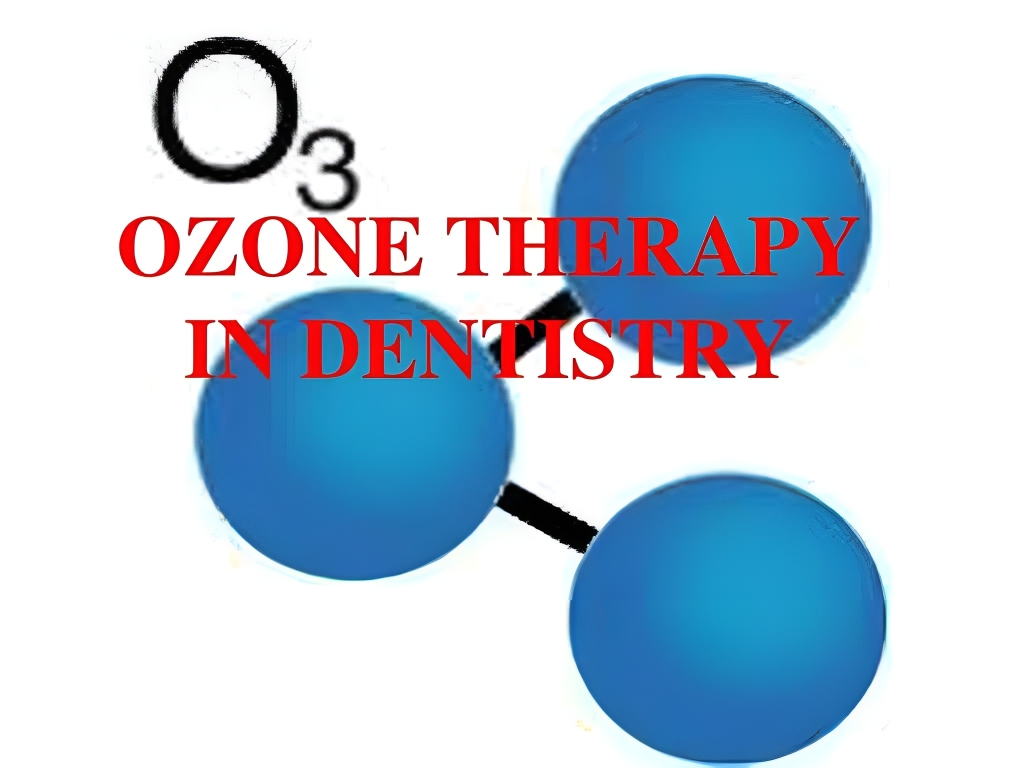
10 benefits of using ozone in the dental office:
- Ozone Oxygen or O2/O3 gas therapy – used in tooth extraction sites to clean the pores of the bone and oxygen to promote healing. Ozone gas is used to clean the pores of teeth during treating cavities. Ozone is also used in treating gum disease. Putting ozone gas into gums for removing anaerobic bacteria in periodontal disease.
- Ozonated Water: Used to treat tooth abscesses, periodontal and gum infections, sore throats, and ulcerations. ozone water is used in all our treatment rooms.
- Clean bone prior to placing a dental implant
- Cavity and caries prevention and gum disease prevention. ozone trays are made that fit over the teeth and gums. the ozone dentist will pass ozone and oxygen gas into the tray for a period of time and the treatment is repeated every few months. There are no side effects or chemicals involved. Ozone tray therapy is considered non-invasive and is one of the most effective forms of cavity and gum disease prevention treatments.
- Prevent root canals and tooth loss. Deep cavities are washed with ozone water followed by ozone gas that often prevents a tooth nerve from dying, thus making a root canal or extraction unnecessary.
- Disinfect a Tooth prior to placing a filling. The tooth is composed of many porous tubules that may contain harmful bacteria. The ozone dentist can use ozone water and gas can permeate these tubules and kill the bacteria. The ozone gas also oxygenates the tooth pulp and helps restore the health of the tooth. When Teeth are not sterilized prior to placing a filling, bacteria and viruses get trapped into the pores of the teeth.
- Treat pain in the TMJ with ozone. The ozone dentist can inject ozone gas directly into the TMJ for the purpose of killing microorganisms which studies show complicate TMJ disorders. It also may reduce the inflammation and promote new cartilage growth.
- Jaw bone infections in past extraction sites that did not heal properly, called bone pathology or cavitations.
- Most patients do not report any side effects from ozone therapy.
- Ozone can treat infection in wisdom teeth removal sites and accelerate healing and decrease swelling and pain.
Key Takeaways
- Ozone dental therapy is an innovative treatment in dentistry, effectively addressing various oral health issues by utilizing the unique antibacterial properties of ozone, which improves overall oral hygiene, accelerates healing, and reduces tooth decay and sensitivity.
- Ozone therapy offers benefits over traditional dental treatments by being minimally invasive, promoting faster healing, enhancing blood circulation, and reducing the use of pharmaceuticals and procedures, which can lead to cost savings for patients.
- Holistic dentists pioneer the application of ozone therapy, recognizing its compatibility with natural healing processes and systemic health benefits, though it’s not typically covered by insurance and costs can vary from relatively affordable to more premium pricing.
Exploring Ozone Therapy in Modern Dentistry
Ozone therapy is a novel approach in modern dentistry that leverages the antibacterial properties of ozone gas, ozonated water, and ozonated oils to drastically improve oral health. The versatility of these forms of ozone allows for diverse treatment options, catering to a wide array of dental conditions. It’s renowned for its simplicity, efficiency, and high tolerability, especially when administered at the correct concentrations for dental care.
Some benefits of ozone therapy in dentistry include:
- Effective treatment for gum disease
- Reduction of tooth sensitivity
- Accelerated healing after dental procedures
- Prevention of tooth decay
- Elimination of bacteria and viruses in the oral cavity
With its numerous advantages, ozone therapy is becoming an increasingly popular choice for dental professionals and patients alike.
For successful ozone dental treatment, the use of specialized equipment is crucial. We have a ozone generator made by Longevity. This equipment accurately generates the precise ozone-oxygen gas blend needed for effective therapy. As such, dental professionals are equipped with the tools and knowledge to administer ozone therapy safely and effectively.
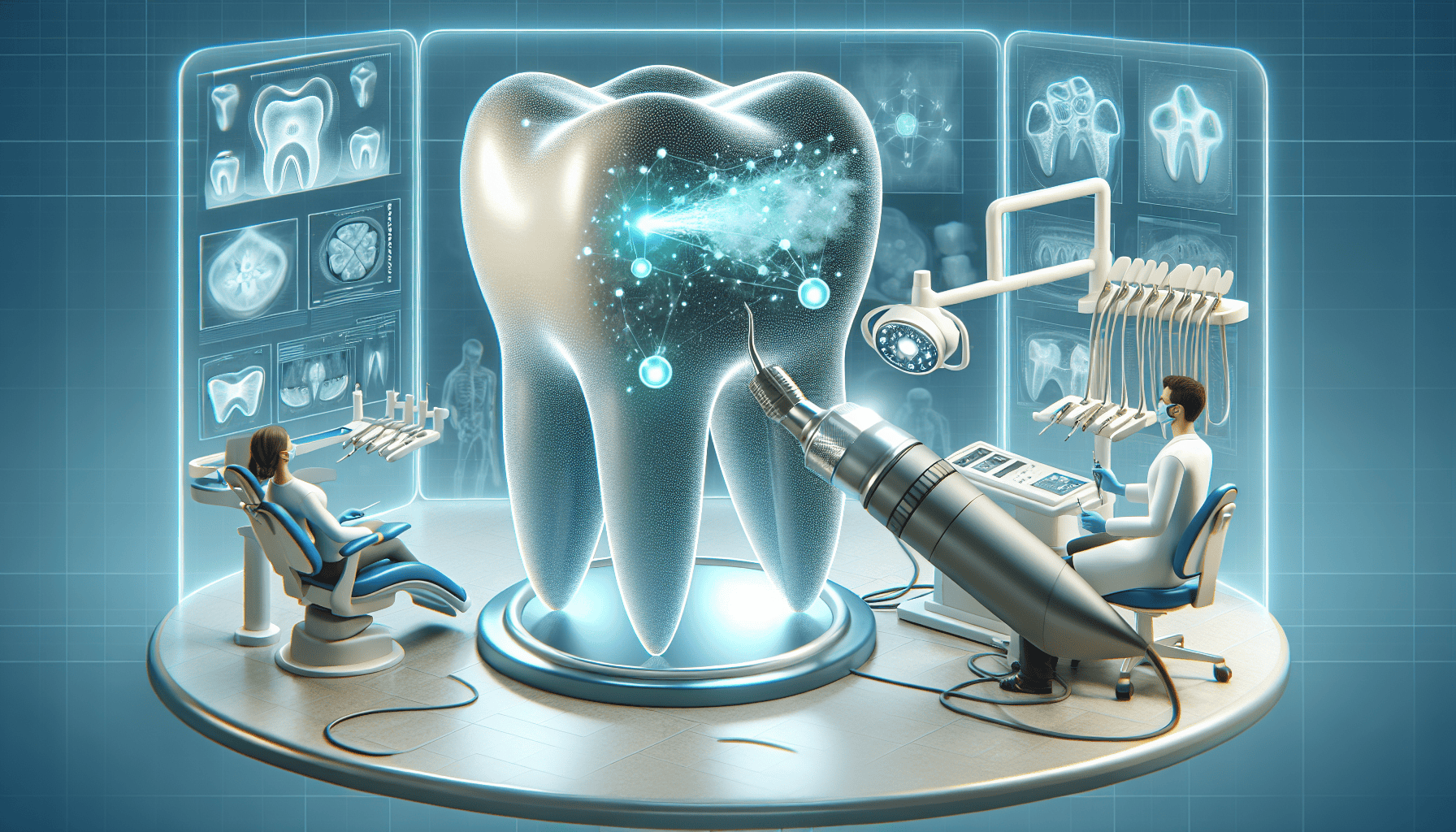
190934eb 6443 4064 9300 250e1764cc1f
The Science Behind Ozone Dental Treatments
What makes ozone therapy stand out? It’s all in the chemical makeup. Unlike oxygen, which has two oxygen atoms, ozone consists of three oxygen atoms, bestowing it with unique chemical properties. Its robust oxidizing properties give rise to reactive oxygen species (ROS), leading to oxidative stress in bacterial cells. This results in damage and cell death, all without directly damaging bacterial cell membranes. This means ozone therapy effectively impacts cell viability across various bacterial strains, even at low concentrations.
In addition to being bactericidal, ozone exhibits analgesic, anti-inflammatory, and immunomodulatory effects, making it particularly beneficial for dental applications. Due to its negative charge, ozone naturally targets inflammation and infection sites in the oral cavity, changing the environment to inhibit the flourishing of harmful bacteria.
Advantages of Ozone Therapy Over Traditional Dental Therapies
How does ozone therapy fare against traditional dental therapies? The benefits are numerous. Ozone therapy eliminates the need for invasive procedures common in traditional treatments like drilling, making it a painless alternative. It also negates the need for pharmaceutical drugs and painful injections such as antibiotics.
Furthermore, ozone therapy offers several benefits in dental treatments:
- Improved blood flow
- Anti-inflammatory properties
- Reduced side effects and complications compared to conventional therapies
- Cost savings by potentially reducing the frequency of dental visits and the need for more extensive dental work in the future
- Better healing, leading to a quicker and more comfortable recovery process
These advantages make dental ozone treatment and ozone dental treatments a significant step-up from traditional dental therapies in terms of dental health, covering many dental treatments.
Targeting Tooth Decay with Ozone
One of the most common dental problems is tooth decay, also known as dental caries. Ozone therapy directly targets tooth decay by stopping the development of caries, eliminating the need for drilling and filling minor defects. Once the harmful bacteria are destroyed, ozone therapy supports the natural healing process of the teeth. This enables tooth remineralization over time, strengthening the tooth enamel.
In some cases of tooth decay, ozone cavity treatment can be so effective that no filling material is required, particularly if the decay is not severe. This reduces the need for more invasive procedures, providing a more comfortable experience for patients.
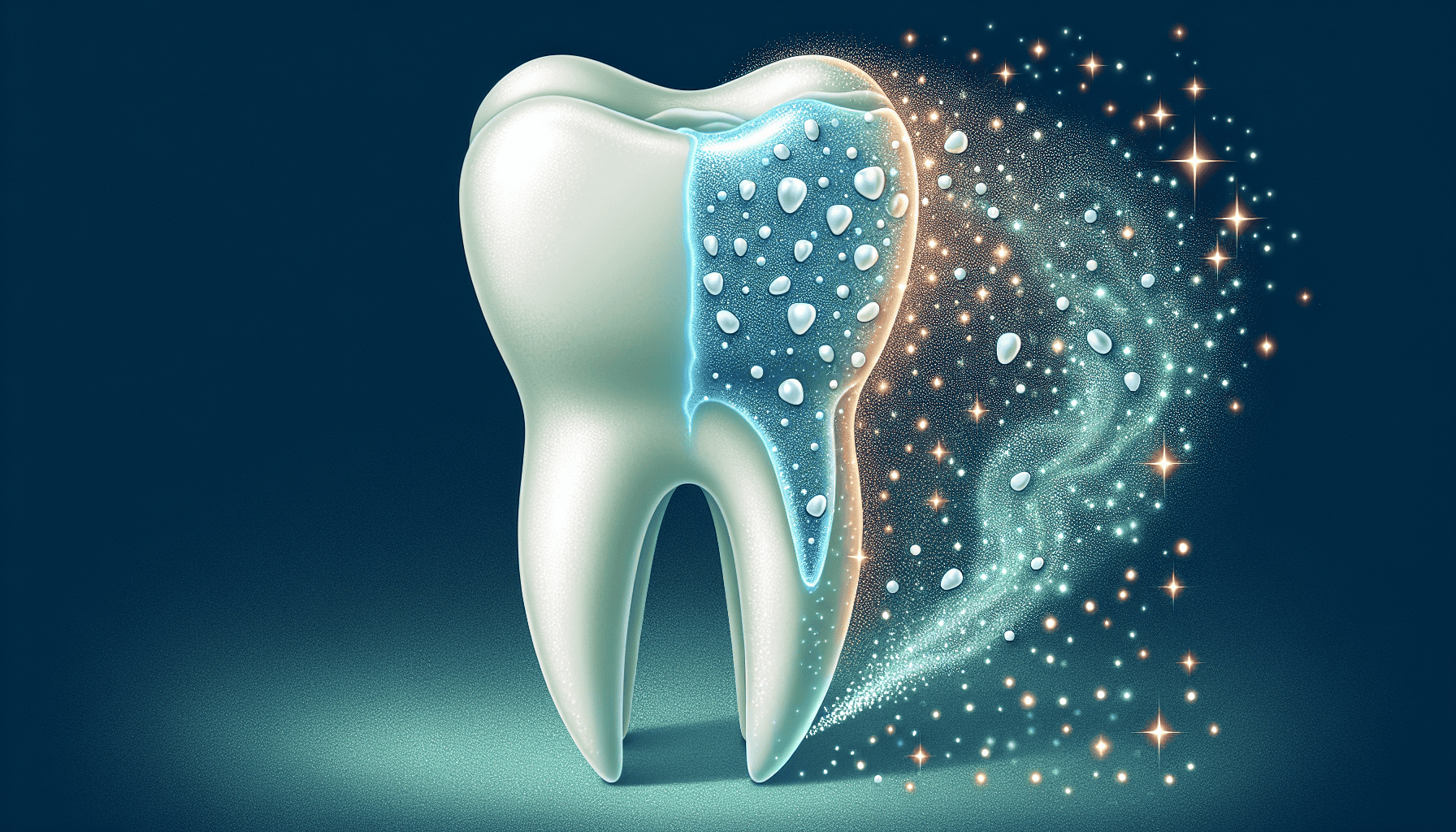
dd3fe45d c761 41ca b121 e756652837f1
Periodontal Disease and Ozone: A Natural Ally
Periodontal disease, commonly known as gum disease, is another prevalent oral health issue. Ozone therapy is utilized to:
- Dramatically reduce and inactivate the microorganisms causing periodontal disease, thereby reducing bleeding and plaque indexes
- Facilitate the quick resolution of inflammation
- Encourage the healing of diseased gum tissues
Ozone therapy is an effective treatment option for periodontal disease.
Various forms of ozone application, such as gas, liquid, and ointment, combined with laser treatments, help control infection and aid gum healing. Periodic ozone treatments can also be applied directly into periodontal pockets, ensuring targeted treatment of disease-causing cells.
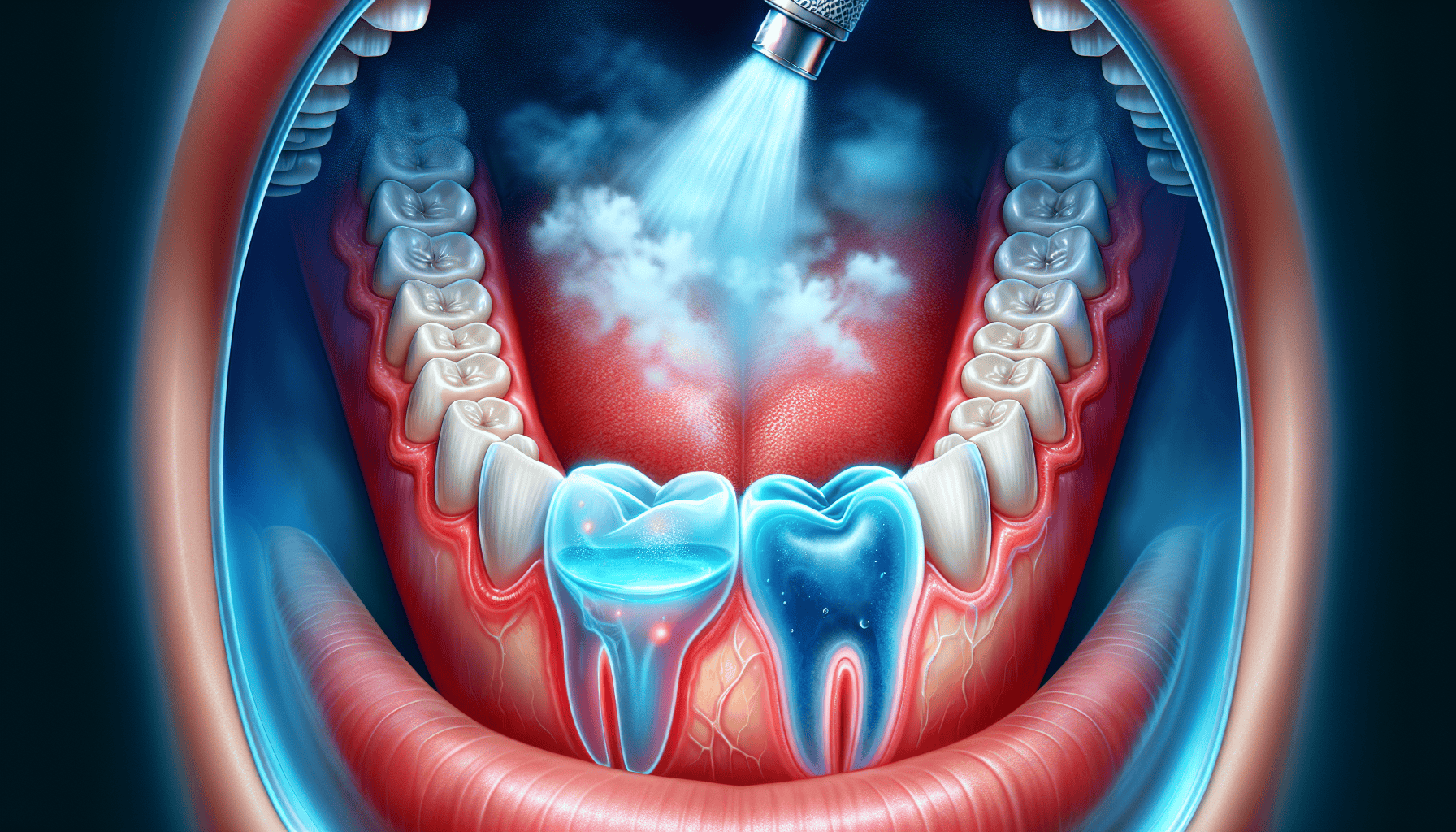
f5b87500 1bb4 4ab7 b6b2 a8cd9534a4b7
Endodontic Procedures Enhanced by Ozone
Ozone therapy isn’t just for preventing and treating tooth decay and gum disease. It’s also an invaluable tool in endodontic procedures, such as root canal therapy. These procedures deal with the diagnosis and treatment of the dental pulp, which contains the nerves and blood vessels of the tooth.
Let’s delve deeper into how ozone therapy enhances endodontic procedures, from minimizing infections to preserving natural teeth and aiding post-procedure recovery.
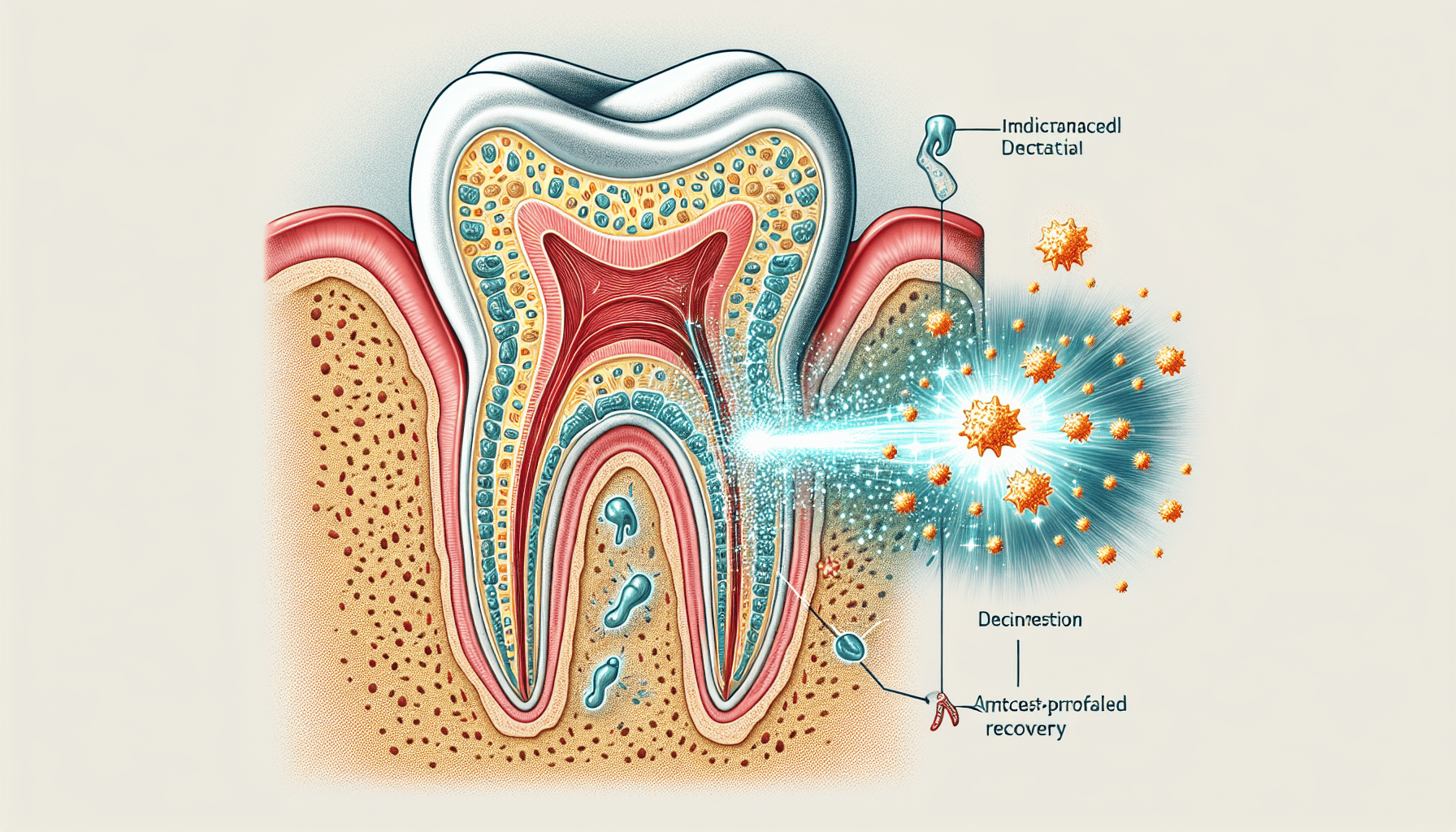
d8a13921 1e9e 48dc a151 40ea4e1886b8
Minimizing Endodontic Infections
One of the most significant advantages of ozone therapy in endodontics is its ability to minimize infections. Ozone gas, used in dental therapy, is capable of deeply penetrating into the structures of a tooth affected by decay. Traditional methods such as local antibiotics and disinfectants often fail to reach the bacteria in intricate areas which ozone therapy can access.
The penetration of ozone gas extends to carious dentin and even through the microscopic dentinal tubules. This thorough sterilization is particularly effective in accessory root canals, which are commonly missed by other disinfecting agents.
Preserving Natural Teeth
Endodontic procedures can often result in the loss of natural tooth structure. However, with ozone therapy, this is less of a concern. Ozone therapy acts as a powerful disinfectant during endodontic procedures, which is essential for keeping the natural tooth structure intact and alive.
Post-Procedure Recovery
Following endodontic procedures, patients often face a lengthy recovery process. With ozone therapy, however, recovery is quicker and more comfortable. Patients can resume their daily activities with no required recovery time following endodontic procedures with ozone therapy.
Furthermore, ozonated water facilitates a quicker healing process for oral tissues, benefiting patients post-procedure.
Addressing Oral and Systemic Health Concerns
Ozone therapy doesn’t stop at improving oral health; it also addresses systemic health concerns. It activates the immune system, stimulates the neuro-endocrine system, and increases blood circulation, encompassing a holistic approach to oral and systemic health. The benefits of ozone therapy include:
- Reduction of surgical needs
- Resolving challenging lesions
- Prompting early wound healing
- Lowering the reliance on antibiotics
These benefits underscore ozone therapy’s efficacy in reducing overall recovery times and improving oral and systemic health.
Holistic dentists have long employed ozone therapy for its anti-infective properties, which now gain increased importance as an alternative to traditional antibiotics due to a surge in antibiotic-resistant bacterial strains. While ozone therapy represents an investment, it delivers the considerable advantage of eradicating bacteria without introducing toxins, aligning with a more natural and holistic healthcare paradigm.
Is Ozone Therapy Safe?
The effectiveness of ozone therapy is clear, but is it safe? When administered correctly, dental ozone therapy is considered a safe treatment with minimal side effects. However, exposure can lead to:
- Coughing
- Nausea
- Vomiting
- Headaches
In severe cases, respiratory complications may occur. Therefore, patients are advised to avoid inhaling the gas during ozone therapy to prevent lung and throat irritation.
In dental ozone therapy, only the necessary amount of ozone for treatment is generated, with a short half-life, ensuring it reverts back to oxygen quickly, leaving no residual ozone. While the FDA has historically expressed concerns about the toxicity of inhaled ozone, holistic dentists appreciate ozone therapy as a safe, natural, and quick-acting treatment that poses minimal risk as it reverts to oxygen shortly after application.
Suitability of Ozone Treatment for Patients
Who is suitable for ozone therapy? It’s particularly advantageous for:
- Patients with dental anxiety or sensitivities to traditional dental anesthetics
- Those with an aversion to conventional treatments find ozone therapy comforting due to its non-invasive nature
- It can sometimes obviate the need for drugs and painful injections, such as antibiotics injected into the gums, beneficial for patients preferring less invasive treatment approaches.
However, precautions and contraindications should be carefully considered. Patients with asthma or other respiratory issues are contraindicated for ozone therapy in dentistry and should consult their dentist before considering it. Potential side effects of ozone therapy should be managed accordingly.
Your Experience with Ozone Dental Therapy
What can you expect during an ozone dental treatment session? The experience is quick and painless. The treatment involves:
- The isolation of the area with a dental dam
- The application of ozone in short bursts to avoid irritation
- A session duration that varies from five to twenty minutes up to an hour.
Safety practices are in place to minimize potential side effects. These include the use of a custom delivery system, the control of ozone inhalation through the use of suction, and rinsing with oxygen gas to remove any residual ozone.
Following the therapy, some individuals may experience the Herxheimer reaction, causing temporary flu-like symptoms and discomfort.
Holistic Dentists: Pioneers of Ozone Dental Therapy
Holistic dentists, such as Dr. Gary Adams, have been pioneers in the field of ozone dental therapy. Dr. Adams in his practice, Maryland Holistic Dentist is renowned for his pioneering work in dental treatments. He is known for being on the cutting edge of dental innovation. He and other holistic dentists advocate for ozone dental treatments due to their alignment with biological dental treatments and the body’s natural healing processes.
Ozone therapy contributes to faster healing and consolidation in cases of dental trauma, such as mandibular fractures, compared to traditional treatments. This highlights the potential of ozone therapy to revolutionize the field of dentistry and provide patients with a more natural and holistic approach to their oral health.
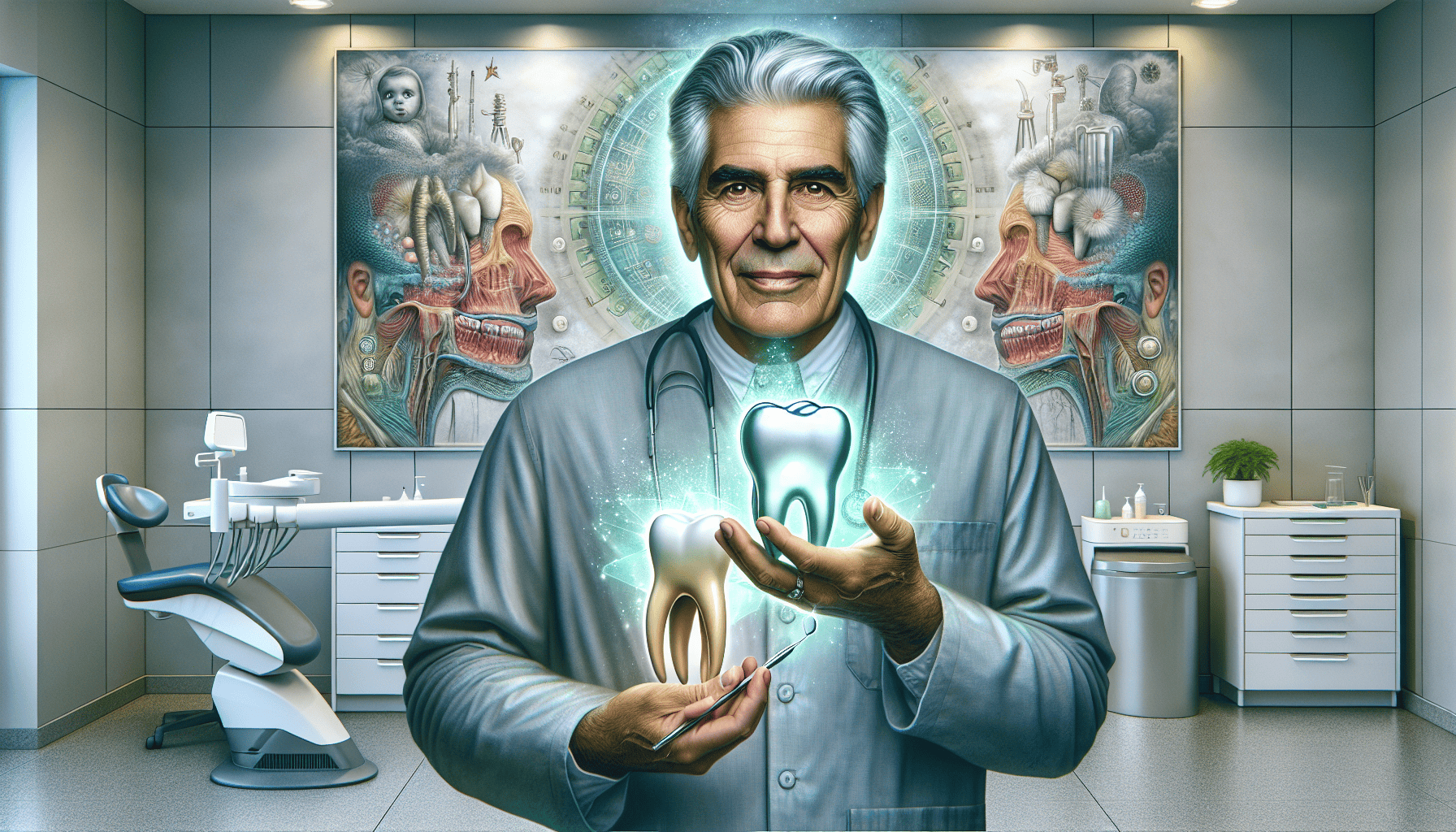
a4163280 28d0 44be a3f3 eeb9108052ef
Ozone Dental Treatment Costs and Considerations
How much does ozone therapy for dental treatments cost? Typically, the cost ranges from $100 to $1000. It’s important to note that ozone therapy for dental treatments is generally not covered by dental insurance, often necessitating out-of-pocket payments by the patient.
Despite the lack of insurance coverage, the lower range of ozone treatment costs can make it a more affordable option compared to traditional dental treatments that are often more invasive and expensive. This makes ozone therapy a cost-effective solution for many patients seeking relief from dental issues.
Summary
Ozone therapy in dentistry is a game-changer, offering a natural, less invasive, and cost-effective alternative to traditional dental treatments. Its unique chemical properties allow it to effectively target and destroy bacteria, helping to treat tooth decay, periodontal disease, and endodontic infections. Despite some concerns about safety, when administered correctly, ozone therapy is a safe treatment with minimal side effects. As the field of dentistry continues to evolve, the role of ozone therapy is set to become even more significant, helping patients maintain their oral health and smile with confidence.
Frequently Asked Questions
Ozone therapy in dentistry uses ozone gas, ozonated water, and ozonated oils to target and eliminate harmful bacteria, improving oral health. It is known for its ease of use, high efficiency, and good tolerability.
Ozone therapy works by generating reactive oxygen species (ROS) that cause oxidative stress in bacterial cells, leading to damage and cell death without necessarily damaging bacterial cell membranes directly. This is due to the strong oxidizing properties of ozone, which consists of three oxygen atoms.
Yes, when administered correctly, ozone therapy is considered safe with minimal side effects, but patients should avoid inhaling the gas to prevent lung and throat irritation.
Ozone therapy is suitable for patients with dental anxiety or sensitivities to traditional dental anesthetics. Patients with asthma or respiratory issues should consult their dentist before considering this treatment.
Ozone therapy for dental treatments generally costs between $100 and $1000 and is usually not covered by dental insurance, so patients often have to pay out of pocket.
What is Ozone?
Ozone is a molecule consisting of three atoms of oxygen. It is produced naturally by sun light or by using an ozone generator. Ozone can be used in dentistry with no side effect and no contraindications with other medicine or any medical disorders the patient may have.
When ozone molecules split into single oxygen atoms, they can react when coming in contact with a contaminant. Ozone is so reactive that it never fails to initiate this reactive activity. The reduction of air borne infections is scientifically proven. This reaction is all done through the single atom oxidizing the contaminants. As this reaction takes place, it destroys all the contaminants it comes in contact with by changing its physical properties, resulting in the contaminant no longer being toxic or able to reproduce. The additional ozone changes back to pure oxygen, thus making it environmentally friendly.
Ozone is basically oxygen with an extra electron. It breaks down to oxygen and release of an electron. In diseased states such as infection, we are deficient. Ozone can reverse the effects of disease and infection with the “oxidative” effect of releasing electrons. Ozone is basically high energy oxygen or oxygen carrying an extra electron.

ozone pic3
Schedule Consultation


 (301) 421 1996
(301) 421 1996 burtonsvillesmiles@gmail.com
burtonsvillesmiles@gmail.com
